House Plants: The Plants You Want, Where To Find Them, And How To Keep Them Alive

Houseplants are a great way to make your home feel warmer and more lived in (and maybe freshen the air and lighten your mood while you’re at it). But, if you are new to plants, choosing one can be intimidating. What plant do I want? Will I kill it? Will it poison my dog?
We know the angst first hand. One of our (marital) partners really wanted to add greenery to the apartment, but her botanical forays kept failing. She neglected two indoor plants her mother had given her. They died. She over-watered a succulent. It died. Her experience left her gun shy. She would walk into a plant shop, feel possibility for a few moments, then become overwhelmed with choices, guilt, and responsibility, and run back out.
Thankfully, she had a friend with a green thumb who eventually walked her through the basics of plant selection and care. And… success! It’s been months with no deaths.
But what if you don’t have a horticulturalist on call? We’re here to help. We sat down with the good folks at Little Leaf, a fabulous boutique houseplant shop in Washington, DC, to run through the basics of plant selection and care.

Is… that ok?
Photo by LisaSympson
Thing 1: Pets
The first thing to think about is your pets, if you have them. “Most plants are actually not safe for pets, so it narrows down the list” says Jennifer Wallace, Visual Content Creator and Manager at Little Leaf. If you have a cat or dog in the house, she recommends calatheas, ferns, air plants, or succulents. If you want to get more exotic without endangering Fido, check the ASPCA’s Toxic and Non-Toxic Plants List.
Thing 2: Your Space
The Second thing is your space. Are you keeping your plants indoors, or out on a balcony or patio? Do you have a lot of direct sunlight, or is your space shadier and dim?
Your space should influence your plant selection somewhat. If you don’t have a lot of light, avoid plants like succulents and cacti that need a lot of light (at least four hours a day, according to the San Francisco Chronicle). “They may do ok for six months,” says Wallace, “but eventually they will die if they don’t get some sun.” For a dim home, consider species that do especially well in low light, like the snake plant or the ZZ plant (short for Zamioculcas Zamiifolia).

Succulent is sustained only by its desperate will to live…
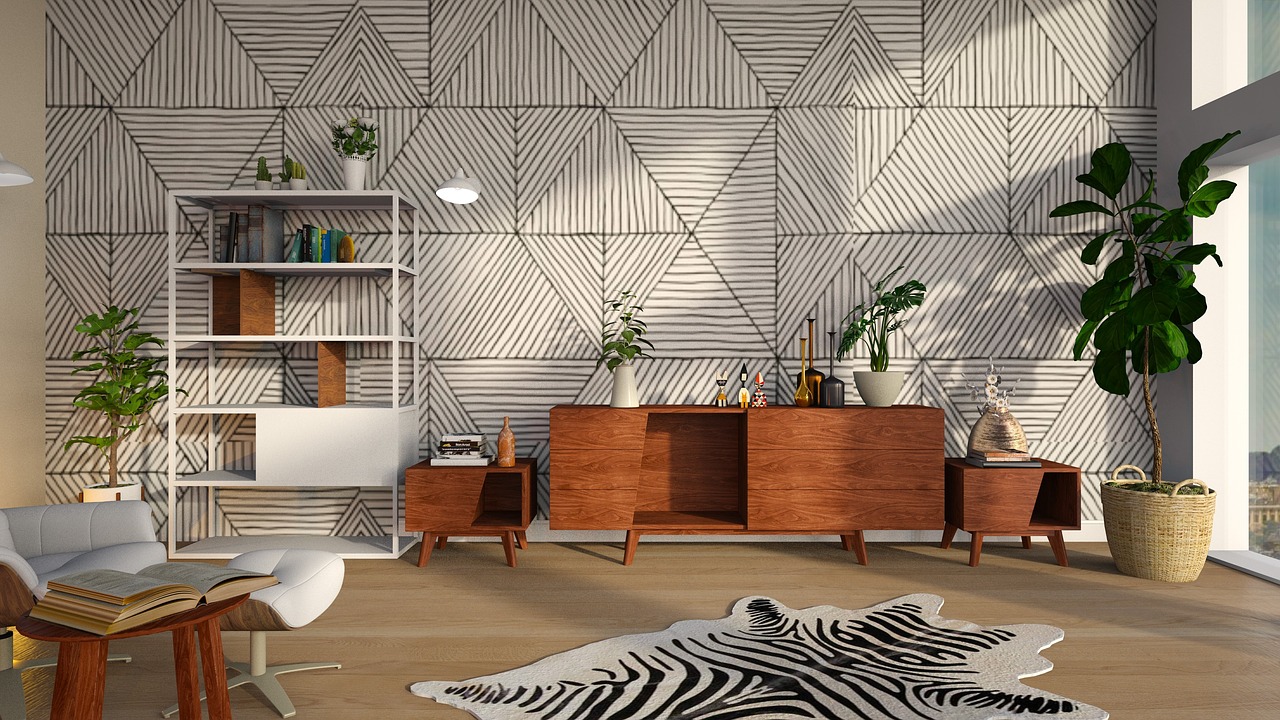
Alexa, is it possible to get an indirect sunburn?
Thing 3: Light Levels and Plant Care
While you should think about your space when selecting a plant, the main thing your space will impact is plant care. Most house plants can get along just fine in a bright or dim apartment, as long as you care for them accordingly. In a shady or dim spot, you should generally only water the plant every two to four weeks. In a bright spot, you should water 1-2 weeks. Soil moisture should be your guide. If soil gets dry, it is time to water.
SETTING PLANTS OUTDOORS IS A DIFFERENT BALLGAME
There is a big difference between indoors and outdoors. The same plant that only needs water every 1-4 weeks indoors will likely need watering every day or so if kept on a balcony or patio. That is because the sun and air circulation outdoors causes evaporation to happen more quickly, so soil will dry out faster than it will indoors, Wallace explains.
INDOOR VS OUTDOOR PLANTS?
Be mindful that there are “indoor” plants and “outdoor” plants. That may seem silly (don’t all plants come from outside?), but it just means that plants need to acclimate to different environments. A plant that has been kept indoors all its life isn’t used to direct sun. “We just put that orchid outside. You can see where the leaves are turning brown because the sun is literally burning it,” says Wallace, by way of example. “It should be fine in a few weeks, because we are giving it plenty of water. But it needs to acclimate to being outside.” Wallace estimates that the acclimation process for most plants takes between 4-6 weeks. If you are undertaking to reacclimate your plant, she recommends setting it out in the sun for a few hours at a time, then bringing it back inside, to allow for the easiest transition.
Thing 4: Drainage, Drainage, Drainage
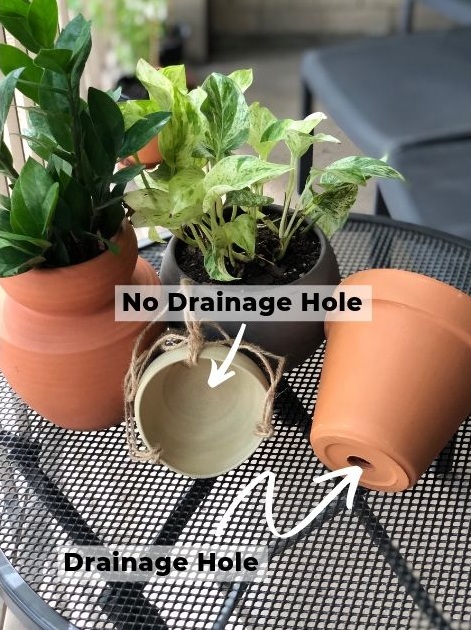
Pots with and without drainage holes. The cost of style…
The pot you will keep your plant in is another very important consideration. The relevant distinction is whether your pot has a drainage hole. This is what it sounds like: a hole or holes in the bottom of the pot that allow excess water to drain out. Your typical terracotta pot will have a drainage hole. Your typical decorative will not. Drainage holes can be messy. You will see some dirty runoff every time you water (which is why terracotta pots usually come with a saucer at the base). However, drainage makes it much easier to keep your plant alive. If you over-water a pot without drainage, the extra moisture can encourage mold and fungus to grow. That will cause your plant to rot. Salts will also build up in your pot overtime if they aren’t flushed out. All of this means that you need to be extra careful watering a plant in a pot with no drainage. (Wallace actually recommends taking the plant out of the pot to water it.) It also means that you will need to re-pot your plant more often: about once a year, compared with 1-3 years for a pot with drainage.
Thing 5: Soil

Indoor plants that came pre-potted from one of our (favorite) retailers, Carousel + Folk sitting on some Walnut Floating U Shelves
Most plants will come potted (unless you are growing them from a seed), so you only need to think about soil when you re-pot, which just means taking the plant out its current soil and putting it in fresh soil either in the existing pot or a new one. You might do this when you bring your plant home (if you don’t like the plastic planter from the store, for instance). Otherwise, you only need to re-pot your plant if it “roots out” (ie if the roots grow to fill the entire pot) or if it has been in the same soil for two or three years (or one year for pots with no drainage, as we just discussed). When you get soil, make sure it’s the right kind for your plant. Succulents and cacti need a sandier variety than other house plants.
IF YOU FEEL LIKE IT: FERTILIZER
Houseplants don’t need fertilizer. You’re not growing produce (if you are, you may want to look for a blog on that topic). In any case, most potting soil already contains fertilizer. “Think of it as a treat for your plant, not a requirement.” Wallace suggests. If you do use fertilizer, follow the directions on the bottle, though Wallace warns that you should generally only use half the amount suggested on the package. For her plants, she adds a very small amount of fertilizer to each watering can, so that it’s not a big deal if she forgets the last time she fertilized.
So…. What Plant Should I Get?
Lowest Maintenance - If you are looking for a plant that will be comfortable in your basement apartment, and won’t look sad if you go on vacation (or just forget to water it) for a few weeks, try a snake plant or a ZZ plant.
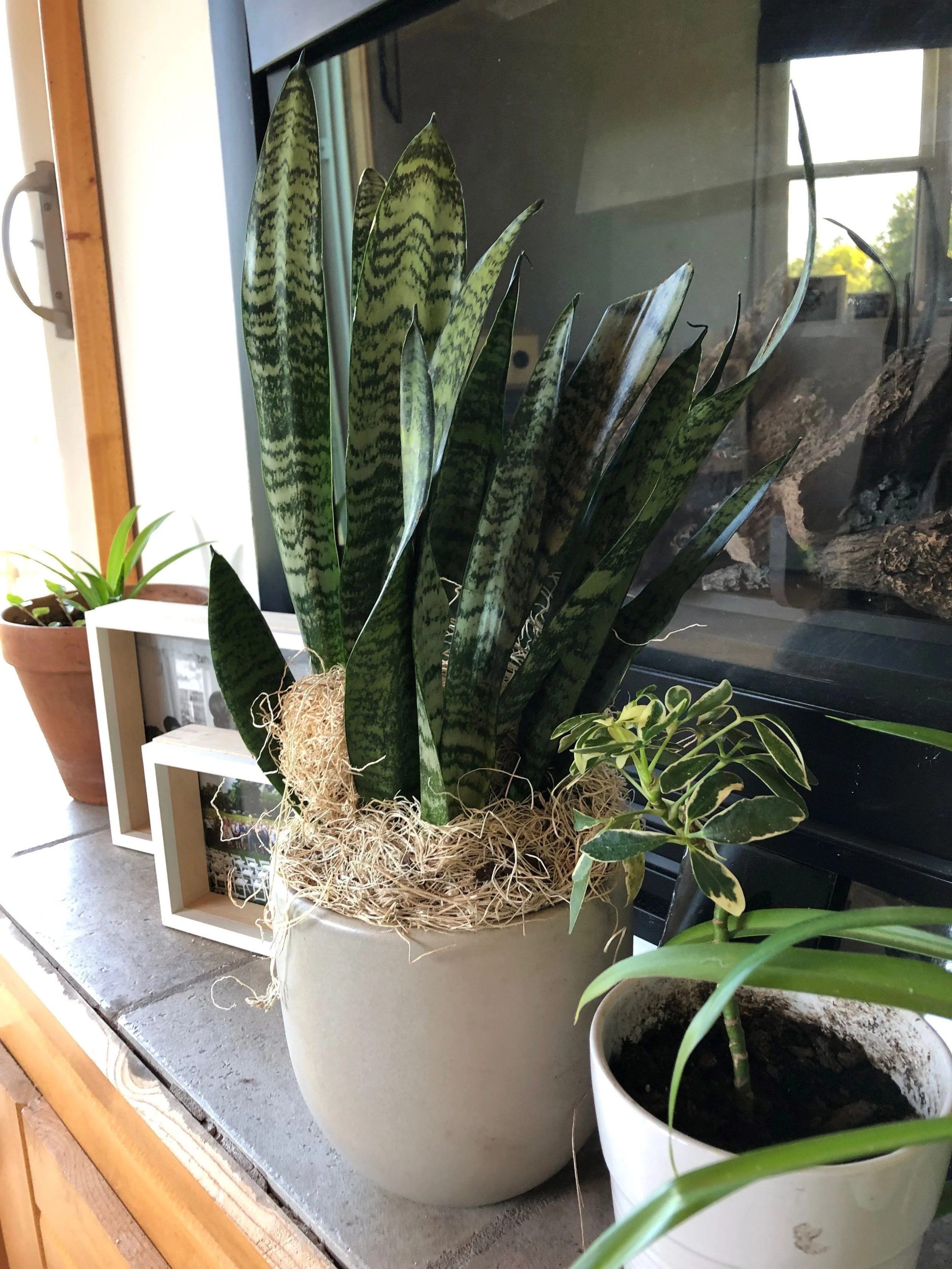
Snake plant fresh out of the box from @thesill (this pic is pre-moss removal, that was just for travel)

ZZ plant courtesy @littleleafshop
Best plants for small spaces - If you don’t have a lot of space in your home, but still want a touch of greenery, succulents and air plants are good options. They don’t take up much space and are happy sitting on a shelf or window sill.
Other Popular Plants - The most popular plants at our favorite little D.C. boutique Little Leaf (can you tell we like this place?) are the fiddle leaf fig and the monstera (or Swiss Cheese plant). Wallace’s personal recommendation, though, is the pothos plant. While they need weekly watering or they will start to lilt, they can go three weeks without being watered. “With proper attention, they grow healthily, like a weed. It is really gratifying,” she says.

Fiddle leaf fig courtesy @littleleaf

Monstera plant courtesy @littleleaf

Pothos plant courtesy @littleleaf
Where You Should Look for Plants
Of course, there are many more options than just the ones we have mentioned here, and there are a number of retailers that have sprung up recently to help navigate the wide world of house plants. Specialized boutiques like Little Leaf can provide you personal care, attention, and advice.
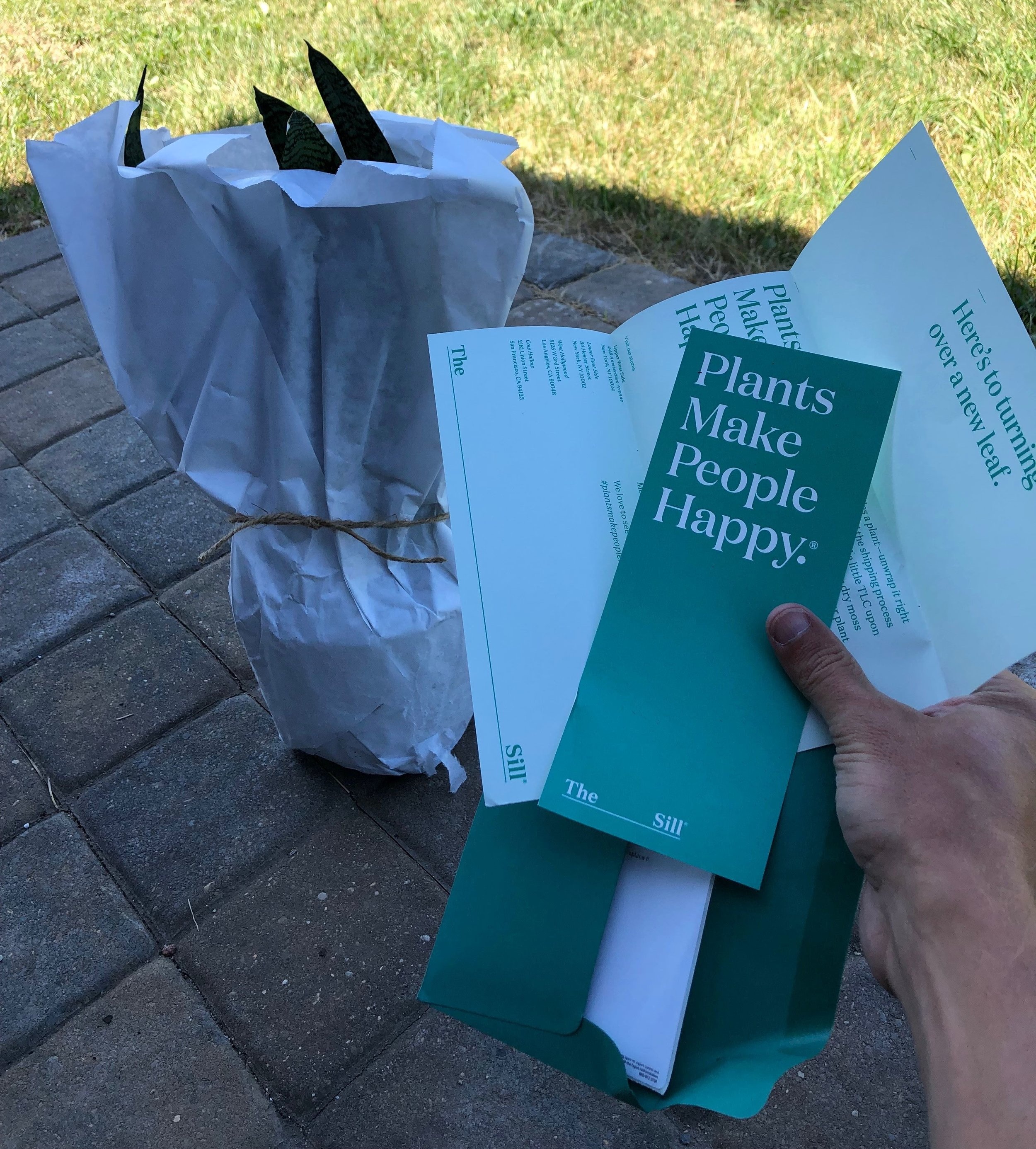
A snake plant delivered courtesy The Sill
If you don’t have a boutique handy, or can’t find a convenient time to visit, online stores like The Sill and Bloomscape can help you sort plants by light and maintenance level, and deliver them, fully potted, right to your door. We recently used The Sill to send a housewarming gift to Northome, Minnesota. (Is that a place? you ask. Barely, we answer.) It arrived without a hitch and was ready to display right out of the box. We are very fond ready-out-of-the-box when it comes to home deliveries.
For those wishing to start window-sill or balcony herb gardens (which is a little outside the scope of what we’ve covered so far) there are also fun services like Gardenuity which offer herbs planted in reusable bags that can be placed anywhere. They also promise to check in on your herbs’ condition and help you care for them to get the best yield.
With all of these options and support, there is no reason to let fear keep you from inviting some green living things into your home. So take a shot.
The Take-Away?
Houseplants are for everyone. The sooner you realize it, the sooner you can get to it. What do you need to know?
-
Find your plant guru! Whether it is that friend of yours who has a mastery in the green arts, the friendly staff at your local plant boutique, or an online plant whisperer, find someone you can lean on and learn from.
-
Pet Safe? Make sure the plants you are considering are safe for your furry friends. That’s non-negotiable. Here’s a list to consult, but check with the seller as well.
-
Know your space. Lots of light? Not so much? Are the plants bound for indoors or heading out to the patio? Take notice and let that inform what you get and how you care for it.
-
Hands-on plant parent? Or looking for set-it-and-forget-it? Well, don’t “forget it”, but depending on variables like how often you’re around, how much time you want to spend taking care, and how comfortable you feel with plant nurturing, there are going to be options to match from the plant to the pots. Then, you can choose based on your taste and your place. We recommend honesty in this particular self-assessment, or you will likely find yourself sweeping up leaves and saying goodbye before long.
-
Where to get? Find your local independent spot, like Little Leaf, if you can. You generally get great advice, get to see before you buy, and these places are generally just pleasant and relaxing to visit. If you’re short on time or don’t have good options in your area, there are great online options like The Sill that provide tons of great options, tools, and resources to help you be an outstanding plant parent.
Once you open the houseplant flood gates, then it is all about finding great homes for all this new vegetation. So many things to consider! From types and styles of pots, shelving and table options, and tools and accessories. The fun has only just begun, especially when it comes to indoor plants. Stay tuned for more plant talk.
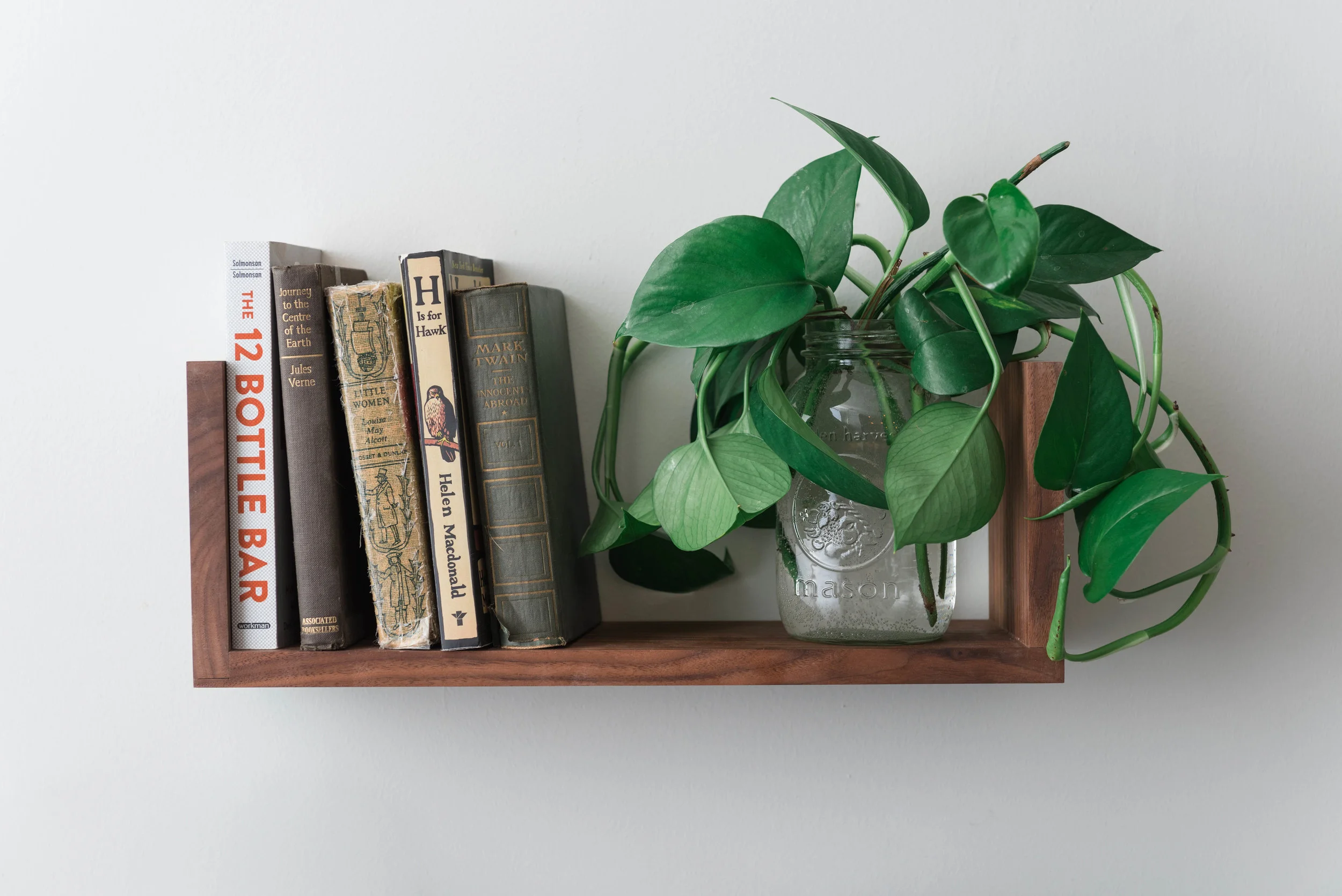
Walnut Floating U Shelf featuring a Pothos plant
Do you have plant parent horror stories? Triumphs? Recommendations? Comment below, tweet at us: @deepcutco, or show us on Instagram (and tag us): @deepcut.co.
Leave a comment
Comments will be approved before showing up.
Also in Blog: Deep Cuts
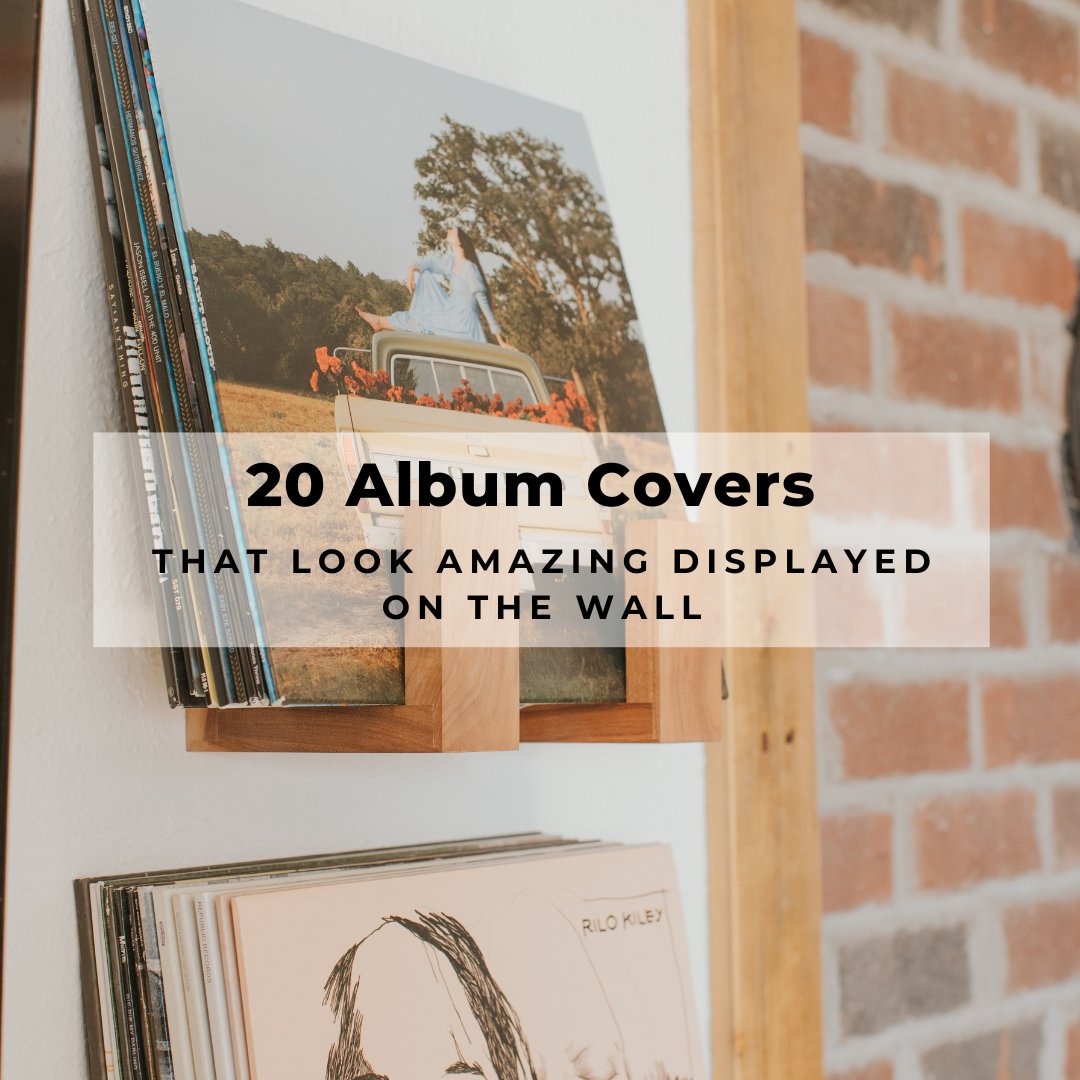
20 Album Covers Perfect For Displaying On The Wall
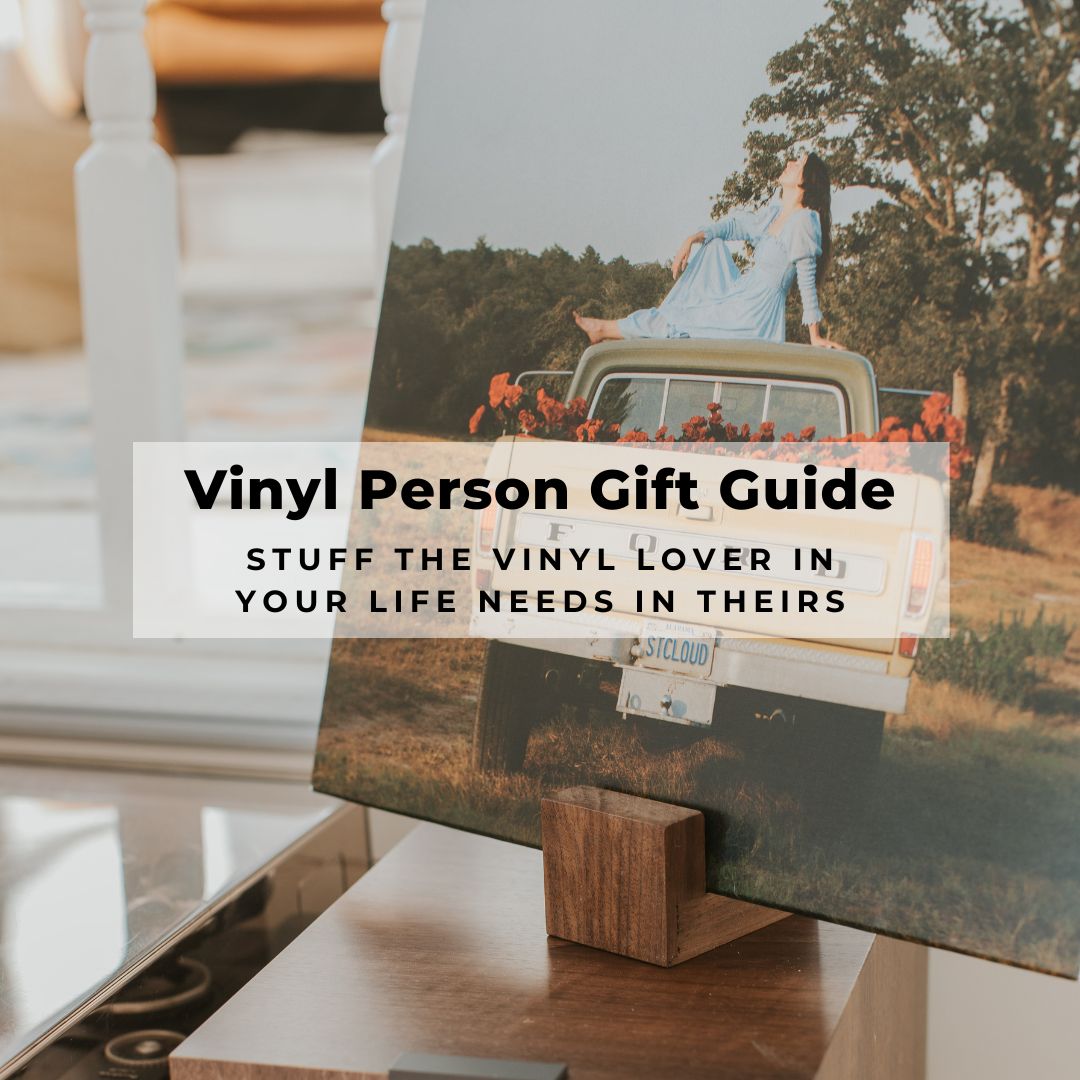
Our 2023 Vinyl Lovers Gift Guide

